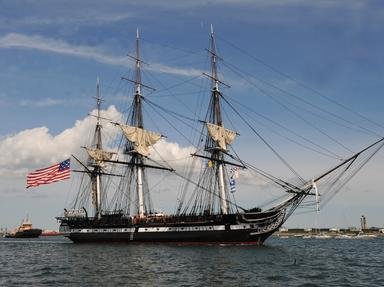Quiz Answer Key and Fun Facts
1. In October of 1760, this man, who is roundly condemned in the Declaration of Independence, became King of Great Britain after the death of his grandfather. Who is he?
2. Upset with British rule after the end of the French and Indian War, several Great Lakes tribes banded together in a revolt that began in 1763 when the tribes attacked Ft. Detroit. What is this revolt that was named after the Ottawa chief who led it?
3. King George III issued the Royal Proclamation of 1763 which created a boundary line between British colonial settlements and Indian settlements. Where was this boundary line placed?
4. In 1764, Britain imposed a new tax law on the colonies meant to replace the rarely enforced Molasses Act. The new law would reduce tax rates, but had a number of provisions designed to increase enforcement. What was the name of this new law that led to the first tax protests in the colonies?
5. What was the name of the tax on printed matter sold in the American colonies passed by the British Parliament in 1765 that led to the first colonial protests that the new law constituted "taxation without representation"?
6. What group was founded in Boston in 1765 largely in protest to the recently passed Stamp Act?
7. Samuel Adams was the leading voice of protest against the Stamp Act in the colonies. He made his living helping to produce what product?
8. The unpopularity of the Stamp Act led to its repeal in 1766. It was replaced by a series of laws that attempted to raise revenue from the American colonies by increasing duties on imports. These new taxes passed in 1767 were named after which British Chancellor of the Exchequer?
9. In defiance of the Royal Proclamation of 1763, what famous frontiersman begins a two year hunting expedition in Kentucky in 1767 until he is eventually captured by a band of Shawnees?
10. In 1769, the Spanish began constructing a series of 21 Missions in California to convert the Indians to Catholicism. What Franciscan friar was responsible for constructing the first mission at what eventually became San Diego?
Source: Author
LIBGOV
This quiz was reviewed by FunTrivia editor
bloomsby before going online.
Any errors found in FunTrivia content are routinely corrected through our feedback system.


